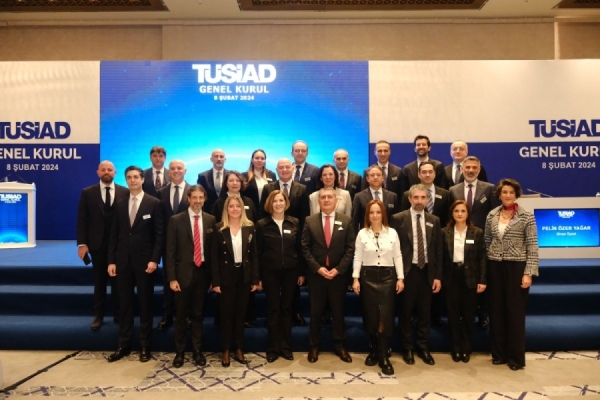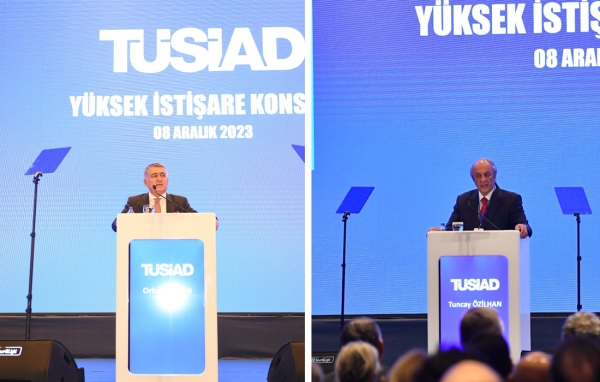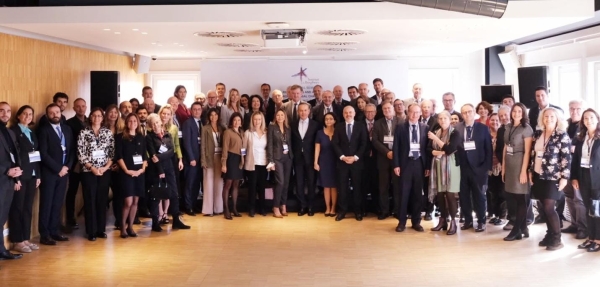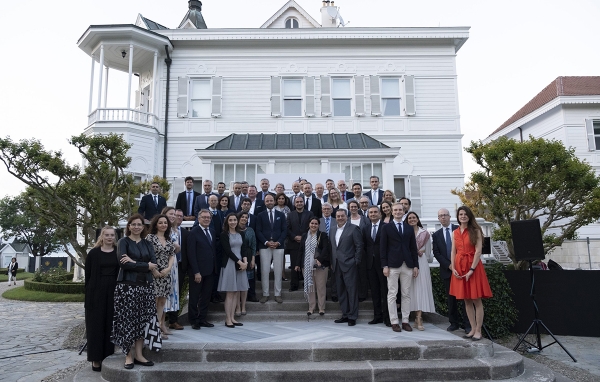Hande BALOĞLU - TÜSİAD Industry, Services and Agriculture Department Expert
In 2009, world focused on the negotiations for the new international climate regime after the Kyoto Protocol, which requires the Annex B countries to reduce their emissions from 1990 levels by 5% between the years 2008 and 2012. After two years of intense negotiations, parties were expected to reach at least a political agreement that will be followed up by a legally binding treaty in COP 15, Conference of Parties.
In line with the high public attention and expectations, 42,000 people, including the delegates and representatives from the NGOs, and 120 world leaders participated to the climate summit. Nevertheless, during the technical and political negotiations, the parties could not reach an agreement, especially on reduction levels of greenhouse gas emissions, climate fund, forests, enforcement mechanisms, market mechanisms and legal framework.
With the leadership of the President Obama, the Copenhagen Accord was declared by the USA, China, Brazil, South Korea and India in the last day of the COP 15.
General Elements of the Copenhagen Accord
• The Copenhagen Accord is rather a political document, which refers to “take note”.
• Parties are invited to limit the climate change to not more than 2°C in 2050 above pre-industrial levels in the context of equity and sustainable development.
• Annex 1 parties (industrialized countries) to the UN Framework Convention on Climate Change, UNFCCC, are invited to commit to implement, individually or jointly, quantified economy-wide emissions targets from 2020, to be listed in the Accord before 31 January 2010.
• Non-Annex 1 parties (developing countries) are invited to communicate their efforts to limit greenhouse gas emissions every two years, listing their voluntary pledges (reductions from business-as-usual, National Appropriate Mitigation Actions -NAMAs) before 31 January 2010.
• Following the conclusion of the climate change talks in Copenhagen, by the 1st of February 2010, the UNFCCC declared that 55 countries made submissions of national pledges to cut and limit greenhouse gases by 2020. Nevertheless, the scientists warn that these commitments are not sufficient for reaching the goal of limiting the global warming to 2°C in 2050.
• Besides the political and legal status of the Copenhagen Accord, its preparation process and consequent declaration in the last day of the summit, by a number of key players without global consensus, caused concerns and confusion.
• There is no clarity concerning the implications of not subscribing to the Accord and not declaring commitments.
• In order to provide financial, technical and capacity building assistance to developing countries, US $30 billion of additional fund is to be provided over 2010- 2012. If developing countries accept transparent control mechanism (MRV-measurable, reportable and verifiable), US $100 billion is to be provided annually by 2020.
Copenhagen Climate Summit and Turkey’s Position
As the unique country being listed in Annex 1 of the UNFCCC but not in the Annex B of the Kyoto Protocol, Turkey’s situation is further complicated by the Copenhagen Accord that invites Annex 1 parties to commit emission reduction.
By underlining the disparities among Annex 1 parties concerning development levels, Turkey classifies herself as a developing country in accordance with her economic and social indicators. Hence, Turkey emphasizes her unique situation constantly during the negotiations. In this respect, it is important that the main negotiation texts refer to the suis-generis situation of Turkey that parties are invited to recognize in 2001 in Marakesh. Although, the negotiations have been set upon the commitments of developed and developing countries by the Bali Road Map in 2007, the Copenhagen Accord mentions the Annex 1 and non-Annex-1 parties. In this respect, Turkey needs to consider this and continuously explain her suis-generis situation that she is a developing country, which is still in Annex 1.
Following the meeting of Subsidiary Bodies in June 2010 in Bonn, the parties are expected to reach a legally binding agreement in COP 16 in December 2010 in Mexico. Upon the “failure” of the negotiations to reach an agreement in COP 15 in Copenhagen, Turkey gained time to conclude preparations for the negotiations. Meanwhile, Turkey can empower her negotiation position by completing required data, inventory, financial and sectoral analysis, climate strategy and action plans.
Business and Climate Change
Considering the economic and social aspects, the climate change issue is not just an environmental problem. Within the framework of the principles of sustainable development, it is necessary to follow integrated policies considering environmental quality, development and industrialization for economic and social welfare. In order to achieve this, it is important to transfer to low carbon economy model through the contribution and guidance of not only the government but also the private sector.
It is expected that the private sector will bear almost 75-85% of the global investment requirements for adapting to climate change and mitigation. In this respect, the business world can be a pioneer in accelerating the transformation to the low carbon economy by taking right steps at the right time after considering the challenges, opportunities and the potentials of their firms and countries. The firms, which can adopt the principles of sustainable development and low carbon economy as their culture, may gain global competition power and take an important share in this new market. In this respect, it is important to restructure economic and social policies as well as sectoral polices, such as industry, energy and transportation, within the content of the low carbon economy and integrated vision and policies.
In the new climate regime of post-2012, finance and development of environmental friendly policies are the main subjects that create a new and enhanced global market. In this framework, Turkey needs to develop strategies for the industry to gain competition advantage. If Turkey can benefit from financial and technological supports and funds, foreseen for the developing countries in the post-2012 climate regime, this would accelerate her transformation to the low carbon economy while increasing the competition power. In this respect, it is indispensable to have well defined cooperation and coordination between the government, public institutions, private sector and civil society.
Country Comparisons: GHG Emissions

Source: OECD, “Key Environmental Indicators”, 2008
Climate Change: Historical Background

Reductions in Energy-Related CO2 Emissions in the Climate-Policy Scenarios

Source: IEA, World Energy Outlook, 2008
World Energy-Related CO2 Emissions in 2030 by Scenario

Source: IEA, World Energy Outlook, 2008
- OECD countries alone cannot put the world onto a 450-ppm trajectory, even if they were to reduce their emissions to zero
"TÜSİAD Article Series"comprised of articles on current debates. The articles are prepared by TÜSİAD researchers. Opinions expressed belong solely to the author and do not represent the views of TÜSİAD.




